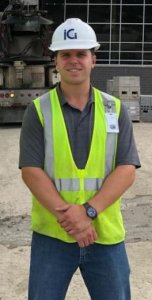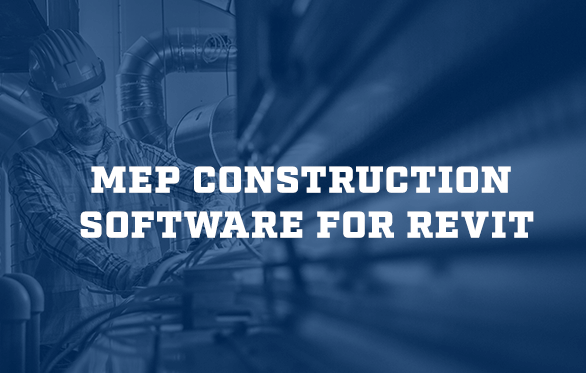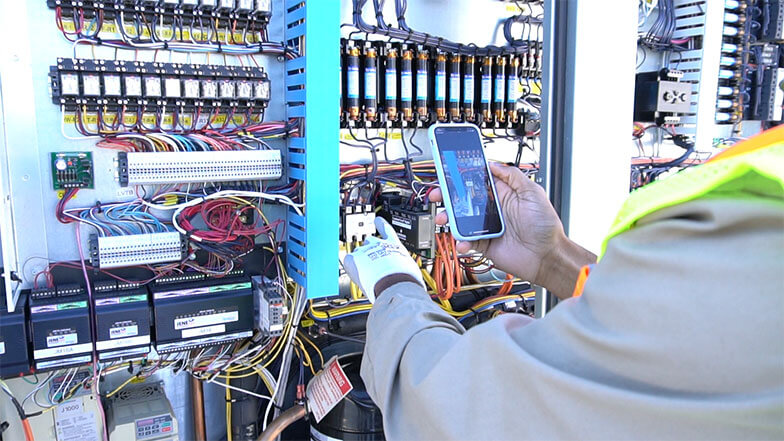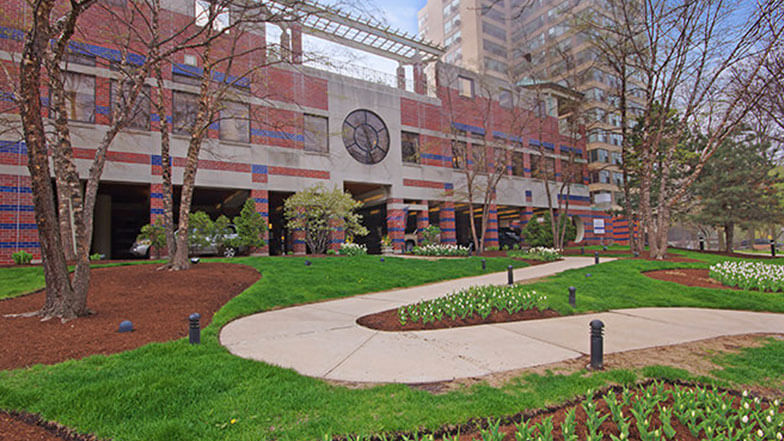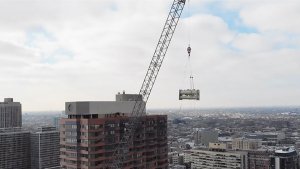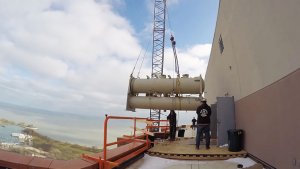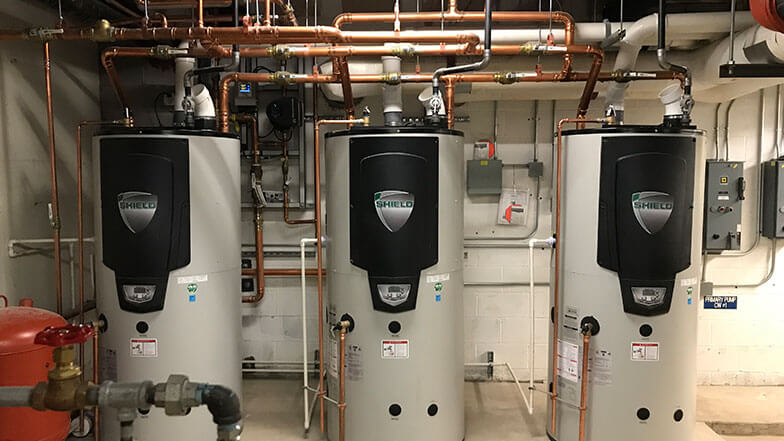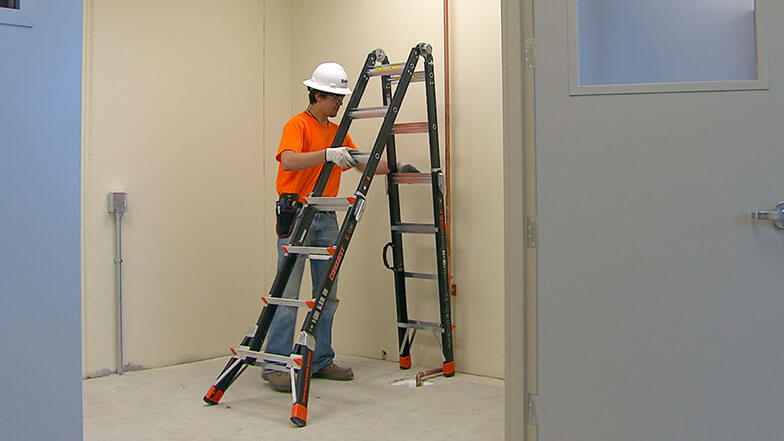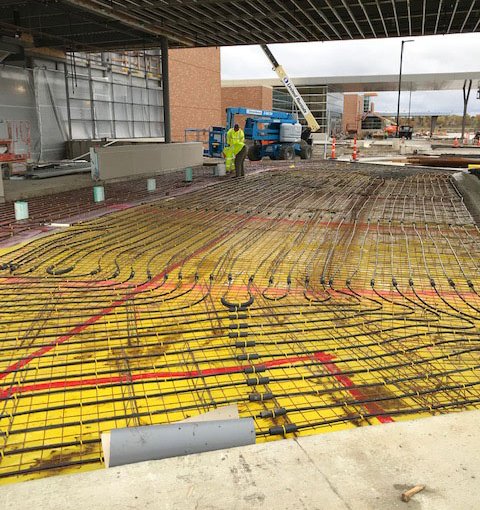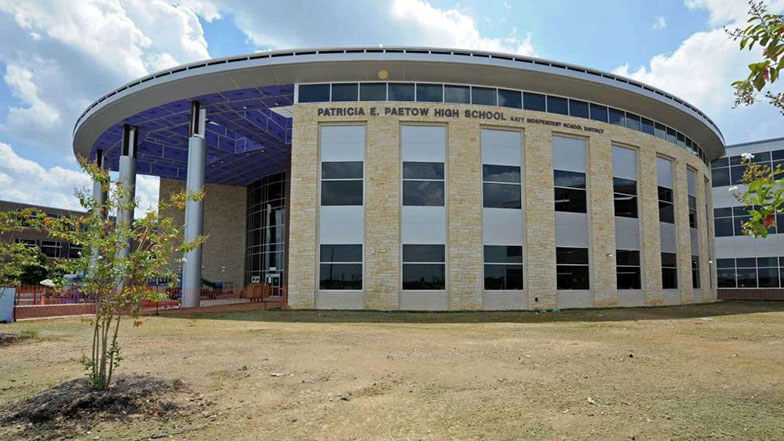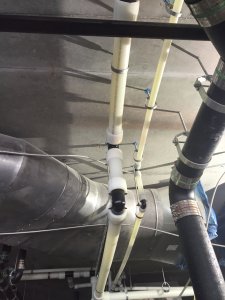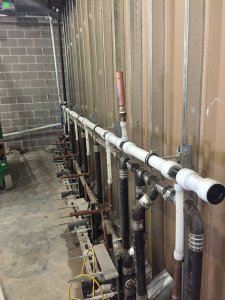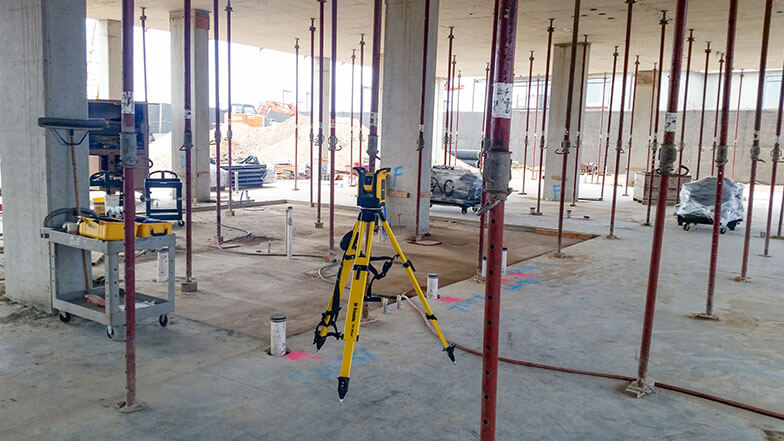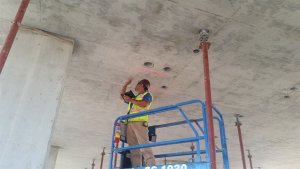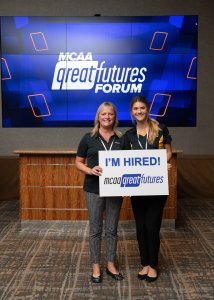John W. Danforth Company installed a new hot water system in a nursing home without incident and with minimal disruption, thanks in part to Ferguson’s expertise in selecting the ideal replacement system. The new system improved overall efficiency for the nursing home and will be easier to maintain than the old system.
Hot Water for Healthy Living
The hot water system of the GreenField Skilled Nursing & Rehabilitation Center is a critical component for protecting and enhancing residents’ health. Efficient hot water supply is essential in the cleaning and disinfection process. The existing water heater system that served the elderly residents in the primary and largest GreenField building was approaching its end of life.
When the system was first designed in 1997, it was oversized for the building’s needs. There was a tank and two heaters for the high-temperature kitchen and laundry system. The lower-temperature shower and sink system had a second tank and two heaters. As GreenField looked to the future, they were concerned about the cost of replacing parts on the old tanks, and they could not afford to be without hot water if the machinery failed.
High-Tech Needs Assessment
Ferguson’s Commercial HVAC, Hydronics, and Water Heating Team worked directly with the facilities manager, Nick Kwasniak, to assess the building’s need. Using new smartflow water technology to measure the flow of water through the pipes, they were able to capture an accurate and reliable reading of the facility’s current hot water usage.
“This data allows us to properly size the water heater they need, instead of using old methods. This impresses facility managers and contractors because they see real data that leads to real cost savings,” said Scott Peggs, Ferguson’s director of commercial business in the Northeast District. Based on the usage data and previous experience, Kwasniak and the Ferguson team chose to update the water heating system to a Lochinvar SHIELD™ water heating system.
In addition to Lochinvar’s 96-percent efficiency and full modulation with 5:1 turndown, the SHIELD system was appealing because its compact size allowed the team to transport the units to the mechanical room easily. Kwasniak said, “The boiler room is deep in the building with no easy access. The new SHIELD tanks were put on a two-wheel appliance dolly and wheeled through the building by a two-person crew. That’s a huge selling point when facing the install of a 500,000 BTU hot water tank.”
Kwasniak had a long-standing relationship with Danforth and Ferguson. He trusted that the team would share his concern about maintaining a hot-water supply throughout the conversion. “Before a job, Ferguson confirms that any needed materials are onsite. Additionally, all replacement material is lined up and ready to go,” said Eric Fularz, Ferguson hydronics product specialist.
New System Improves Efficiency
Ferguson supplied the piping layout and equipment to the facility, and Tim Ruggiero, a plumber with Danforth, installed the system. “Replacing the old system with a modernized version required that the entire boiler room be repiped. We were downsizing from two systems to a more efficient Lochinvar water heater system,” said Ruggiero. “The new integrated and state-of-the-art system pulls the hot water directly to the kitchen and laundry or through a new Powers electronic mixing valve that maintains a safe temperature for the showers and sinks. All the tanks are kept above 140° F. This prevents Legionella bacteria and protects the residents’ health.”
According to Fularz, “Another important change in the system included updating from the old non-condensing heaters to new condensing equipment. When water temperatures returning to the unit were 130° F or below, the unit would condense. And when equipment that is not made to condense does, it can damage the burners, igniter, heat exchanger, and anything else it contacts. The new equipment is made to condense. This is where it gains efficiency, and it is essential that colder temperature water return to it. This required a change in the pipe system.”
The installation was trouble-free, with minimal disruption to the business. “It took roughly two-and-a-half weeks for the job to be complete. Our total downtime was less than four hours,” said Ruggiero. Kwasniak noted, “After the install, no one—from kitchen staff to laundry staff—noticed a difference in supply after running on a quarter less the hot water capacity. And that is a good thing.
“There is no doubt that a year out, we will see significant savings,” Kwasniak continued. “Additionally, improving our energy efficiency was an important concern which we are pleased to address with the new Lochinvar water heater system. Ferguson’s ability to calculate our actual hot water usage greatly reduced our total storage and BTUs from the original design.”
Ruggiero highlighted an additional safety benefit. “Conducting maintenance on the system in the future will be worry-free. In the past, during times of maintenance, the building experienced periods of fluctuation or no flow. With this new system, we can take one system down for maintenance and the other system will continue to provide the residents with a consistent flow of hot water that still meets all state regulation temperatures.”
A Model System
The project was such a success that Kwasniak, Ruggiero, and Ferguson will host the Central New York Society of Healthcare Engineers in February 2020. “We will bring in facility managers, engineers, and design-build professionals to tour the GreenField Skilled Nursing & Rehabilitation Center and see the new system, and Ferguson will have the opportunity to provide training on their services,” said Kwasniak.
Training is essential to Ferguson’s success as an experienced partner. “We find that the more we share our knowledge and expertise, the more comfortable contractors and builders are with the products,” said Cody Genkos, Ferguson heating sales specialist. “Each situation is unique, so the more they know, the more it allows us to work together to find unique solutions. For example, health care engineers have different requirements, even government regulations they must meet during a job.”
Mike Zaremski, Ferguson product specialist, added, “Whenever we conduct training, someone always says, ‘Oh, I wish I knew that before.’ Not only are we helping them improve energy efficiency, by providing training on our equipment, we also help our customers find smart, more efficient ways of maintaining their system.”
“It is unusual to have an expert onsite to explain and demonstrate the science and mechanics in your hot water system,” added Peggs. “Our product experts are onsite or on call with facility managers to help tackle technical issues.”
Danforth and Ferguson are proud to help GreenField Skilled Nursing & Rehabilitation Center maintain its reputation for safety for many years to come through the new and improved hot water system.
For more information, visit www.ferguson.com.
MCAA thanks Ferguson for being a benefactor of MCAA2020 and for sponsoring the Partners’ Program & Breakfast featuring Geena Davis.
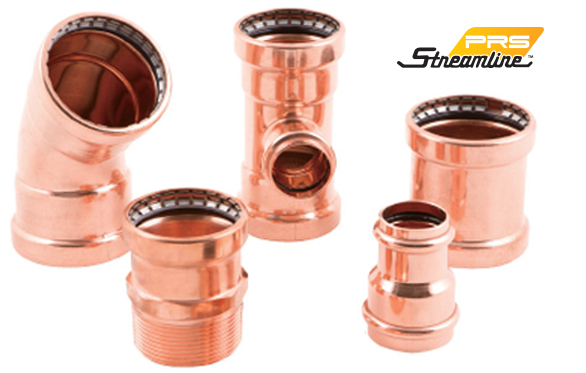
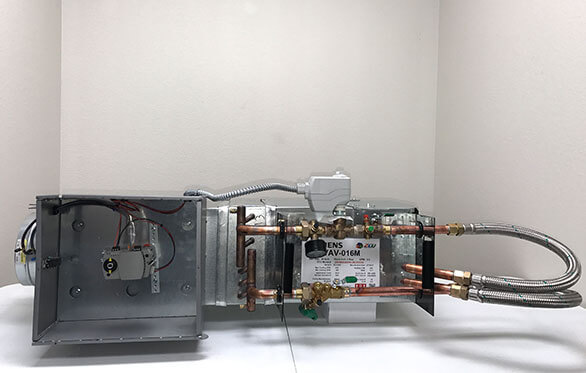
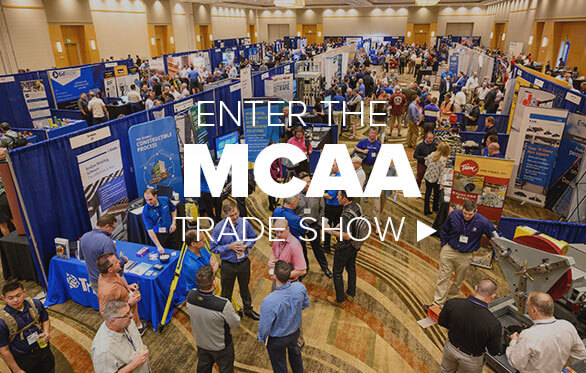

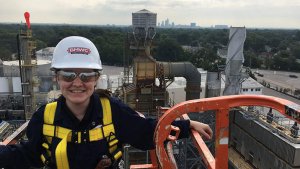
 Kathy Deng, University of Southern California
Kathy Deng, University of Southern California 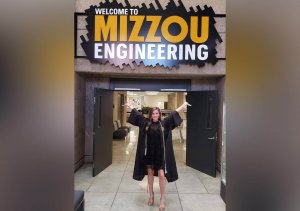
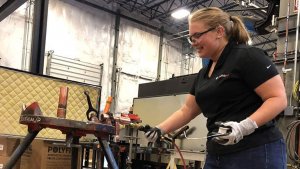 Molly Sizemore, Pennsylvania State University
Molly Sizemore, Pennsylvania State University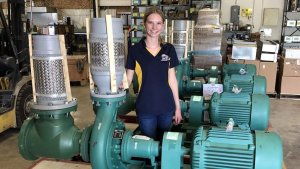 Alex Berman, Kent State University
Alex Berman, Kent State University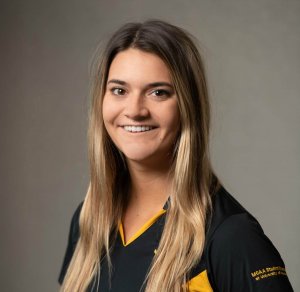 Kylie Nedelka, a mechanical engineering major from the University of Missouri-Columbia, has accepted a second summer internship with SIEMENS, a member of MCAA’s Manufacturer/Supplier Council. Kylie found the opportunity at the 2018 GreatFutures Forum, where she met Kristin Junia, Program Manager at SIEMENS. Kylie said, “My experience was so great, that I have accepted a position as an engineering intern for this upcoming summer! I look forward to the new experiences to come!”
Kylie Nedelka, a mechanical engineering major from the University of Missouri-Columbia, has accepted a second summer internship with SIEMENS, a member of MCAA’s Manufacturer/Supplier Council. Kylie found the opportunity at the 2018 GreatFutures Forum, where she met Kristin Junia, Program Manager at SIEMENS. Kylie said, “My experience was so great, that I have accepted a position as an engineering intern for this upcoming summer! I look forward to the new experiences to come!”
